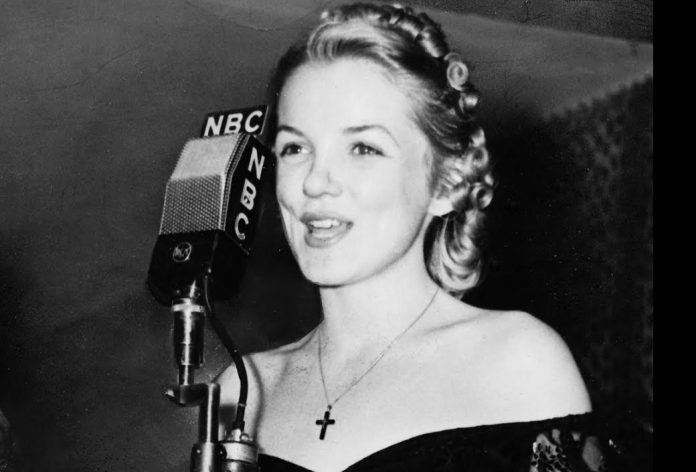The good news is we’re living smack dab in the heart of Centenary Central, the really good news is how many centenarians are of the musician, performer and vocalist persuasion, either jazz or jazz-inflected. The bad news is in the last five years alone we’ve lost out on some doozies – Jo Stafford, Dinah Shore, Skip Martin, Charlie Ventura, the Eberly Brothers (that’s Eberly with a b, not a v) to say nothing of Mr. Sinatra himself. But not to worry, there’s still some colourful copy out there and I’m ready to truffle it out.
Take Helen O’Connell for example, one of the finest big-band singers of the day in an era when top-class girl band singers were thick on the ground. Born in Lima, Ohio, 23 May 1920, she grew up in Toledo and began singing there as a 15-year-old on local radio, graduating to minor bands like Jimmy Richards and Arthur Wylie.
By age 18 she was with Larry Funk and his Band of a Thousand Melodies (remember them?) at The Village Barn in Greenwich Village where she was heard by Jimmy Dorsey’s manager. Dorsey signed her as his girl vocalist in early 1939, a shrewd move; in 1940 she came top in a Metronome poll and was named Best Female Vocalist of 1940. Downbeat readers went one better and voted her Best Female Singer of 1940 and 1941.
She married playboy Clifford Smith in 1941 but she remained with Dorsey through 1943, arguably the four most high-profile years of a career that embraced recording, radio, movies, television and nightclubs and endured to the close of the 70s.
Although primarily a solo singer (her 1942 recording of Brazil with the band was added to the Grammy Hall of Fame in 2009) she is probably best remembered for the string of Latin-flavoured duets she did with the band’s boy singer Bob Eberly (older brother of Ray, who worked for Glenn Miller) – Time Was, Green Eyes, Amapola, Tangerine, Yours – all of which followed what proved a winning formula; Eberly would croon a chorus in ballad-time then O’Connell and the band would up the tempo and swing it, the result being solid hits for all concerned.
While still with the band O’Connell appeared in two prestigious Hollywood movies, Paramount’s The Fleet’s In (later remade as G I Blues with Elvis Presley) and MGM’s I Dood It. If the latter yielded the standard Star Eyes, by Gene DePaul and Don Raye, the former boasted the finer all-round score, with I Remember You, Tangerine, Not Mine, The Fleet’s In and Arthur Murray Taught Me Dancing In A Hurry with lyrics by Johnny Mercer and music by Victor Schertzinger who also directed but sadly died shortly after completing the film.
Although she quit the band in 1943 to concentrate on her marriage she did return briefly to play herself in the 1947 biopic The Fabulous Dorseys, purportedly a true account of Tommy and Jimmy Dorsey that fit where it touched. By 1951 the marriage had run out of gas and O’Connell hit the ground running in a new decade for which her stunning looks, showmanship and personality – today we would call it charisma – made her a natural for the fast-growing new medium of television where she flourished throughout the 1950s, often appearing in front of the Frank DeVol outfit (DeVol, in fact, would be the last of her four husbands and subsequently her widower).
In 1953 she reunited with Bob Eberley on TV’s Top Tunes which also featured Ray Anthony. The successful show was a summer replacement for Perry Como’s CBS Show, and she was the featured singer on The Russ Morgan Show, also on CBS, in 1956. One of the first “girls” signed for NBC’s The Today Show, where she was hired to talk as well as sing, she was a regular between 1956 and 1958 and in 1957 she had her own 15-minute spot, The Helen O’Connell Show, which aired twice a week on NBC, this at a time when rock ’n’ roll was sweeping all before it.
By the 1960s she was an accomplished performer on the night-club circuit where a stint at the Copacabana in 1964 attracted a “money” review from the New York Times. From 1972-80 she co-hosted the Miss USA and Miss Universe pageants with Bob Barker and in 1976 was nominated for an Emmy for the former. In 1971 she married – for the fourth and final time – Frank DeVol, with whose band she had sung in the 50s and the marriage was still going strong when she passed away aged 73 on 9 September 1973.
Of all the tributes paid to her the one that would arguably have pleased her the most appeared in an obituary on AP (Associated Press) which described her as “the quintessential big band singer of the 1940s”. Amen to that.
















